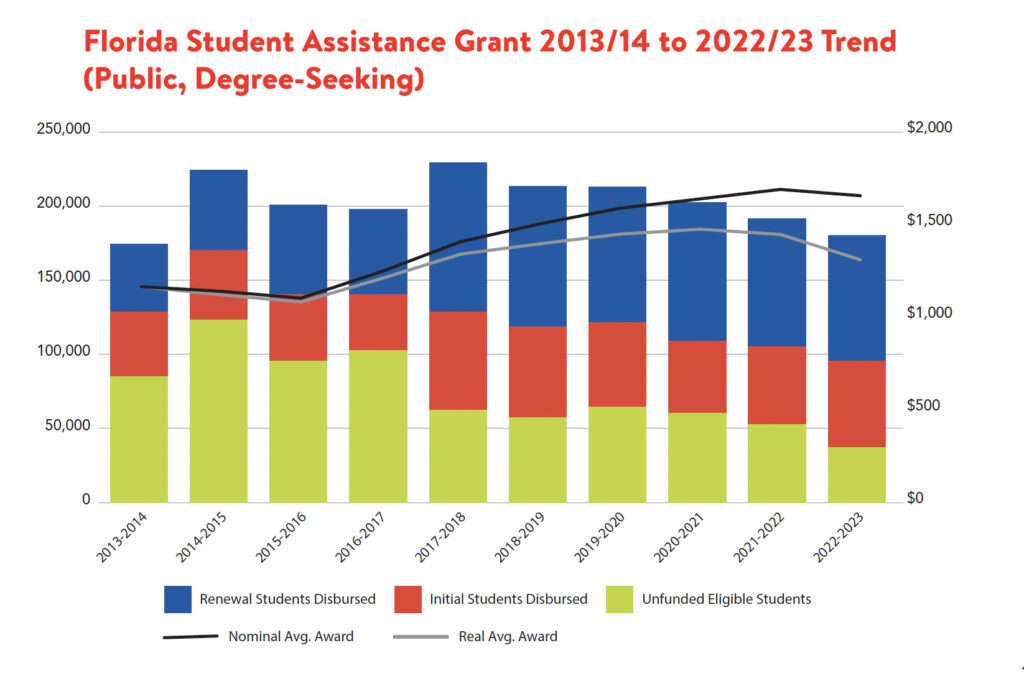~New Report Illuminates Real Cost of College in Florida~
A new report released today by Florida College Access Network highlights opportunities to improve college access and affordability for low-income students in Florida. While tuition, fees, and textbooks stand as primary expenses, most college costs are attributed to living expenses. The new report examines four model student profiles to illustrate typical daily costs in Florida such as housing, food, and transportation—costs that limit many students’ ability to pursue and be successful in education after high school.
 Report findings suggest there are multiple financial stressors faced by today’s students and recommend several measures to support those seeking college degrees or industry certifications:
Report findings suggest there are multiple financial stressors faced by today’s students and recommend several measures to support those seeking college degrees or industry certifications:
- Expand the Florida Student Assistance Grant (FSAG): Currently offering need-based aid ranging from $200 to $3,260, FSAG alleviates financial stress for Florida’s lower income students. Most recent data available suggest there were 37,278 eligible applicants of FSAG who were denied aid due to limited state funding.
- Implement a Universal FAFSA Completion Policy with an Opt-out Option: Requiring Florida public high school seniors to complete the FAFSA, as a graduation requirement, will increase access to federal grants, institutional scholarships, and other sources of financial aid reducing the overall cost of college for students and families.
- Create a Statewide Emergency Aid Program: Florida should consider investing in and incentivizing local development and administration of emergency student aid programs. Aiding students during short-term financial hardship will help them stay enrolled. National surveys show that 73% of college students experience financial difficulties, and 57% would struggle to find $500 in an emergency.
“Florida is a leader in higher education, but there are significant areas for improvement,” said Braulio Colón, executive director for the Florida College Access Network (FCAN). “While we celebrate being a low-tuition state, and we applaud the positive impact keeping tuition low can have on students and families, the reality is the unendurable costs of housing, food, transportation, and childcare keep too many high-achieving, low-income students away from meaningful career pathways they aspire to be on.”
According to the National Center for Education Statistics, 40% of Florida’s public university, college, and career and technical education undergraduate students come from lower-income households and qualify for federal Pell grants.
Despite needing additional financial aid support, nearly 40% of qualified applicants for Florida’s need-based FSAG program were excluded in the 2022-23 program year.
“The data highlights the need to expand Florida’s primary need-based grant program,” said Dave Sobush, director of research and policy at FCAN. “Funding the 37,278 aid-eligible but unfunded students at the average award of $1,650 would have required an additional $61.5 million investment from the state, representing 0.2% of all education appropriations, and 0.05% of overall state appropriations.”
The Real Cost of College Attendance in Florida underscores the realities of affording college and advocates for the expansion of much-needed financial aid support programs.


